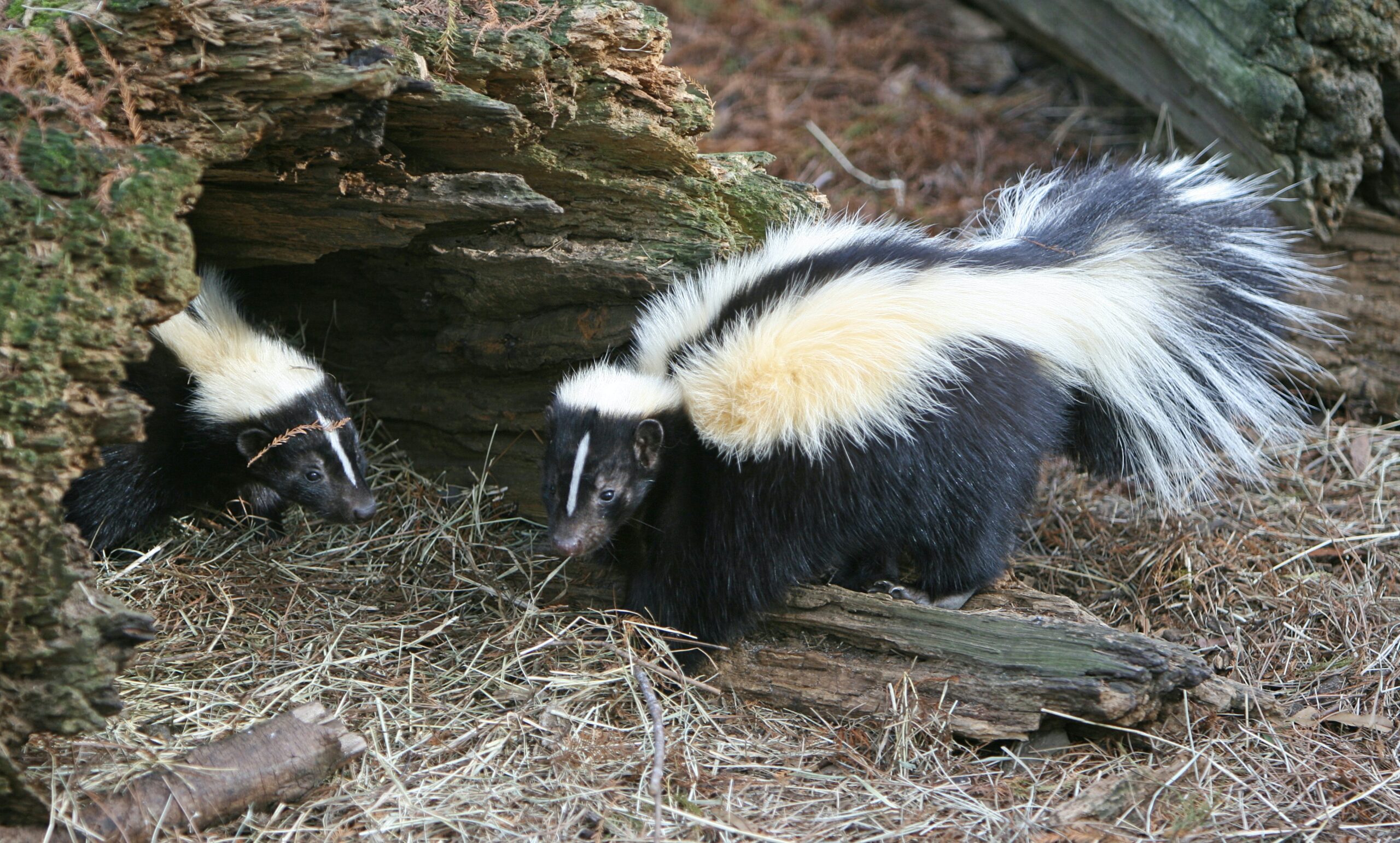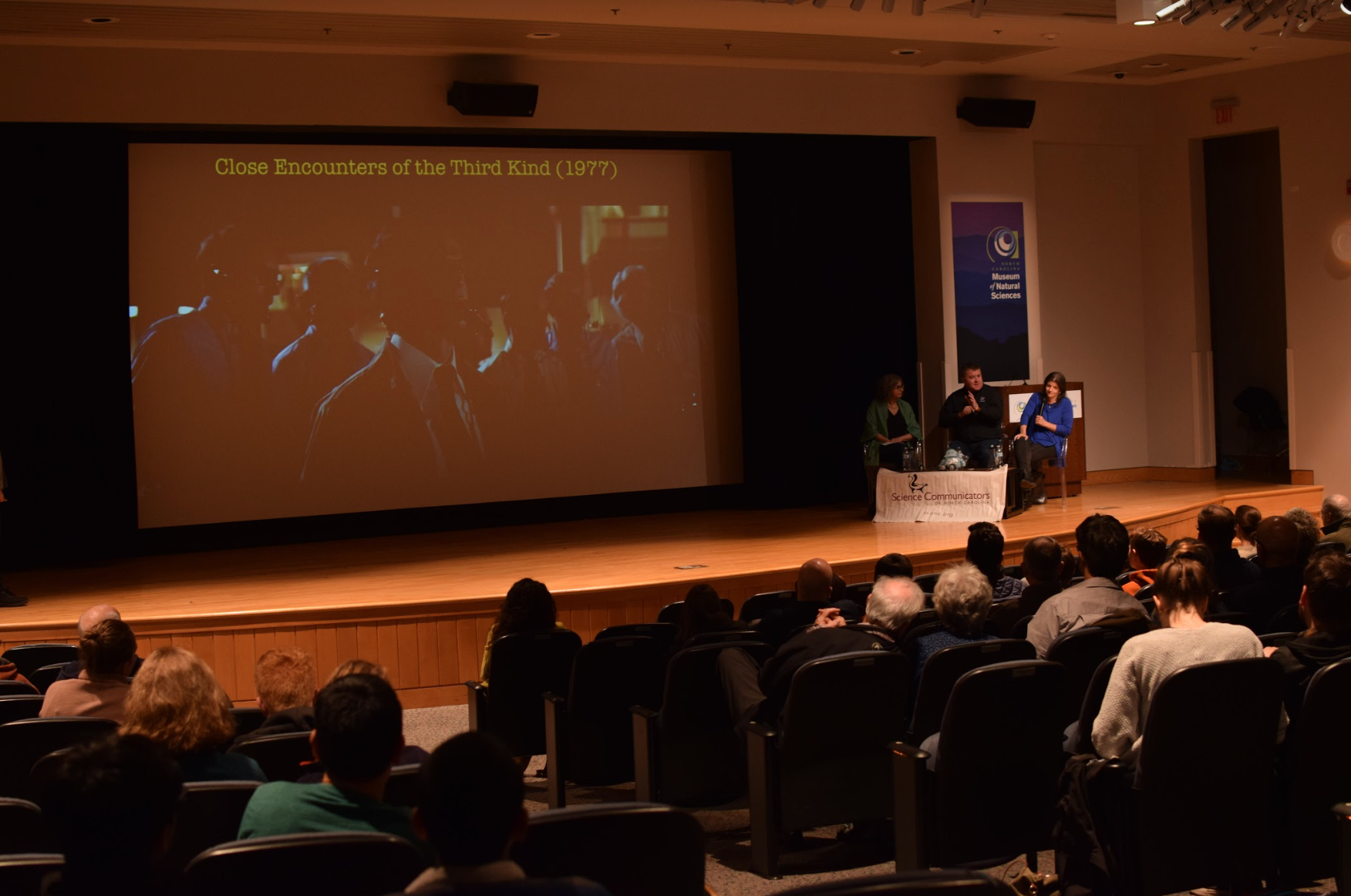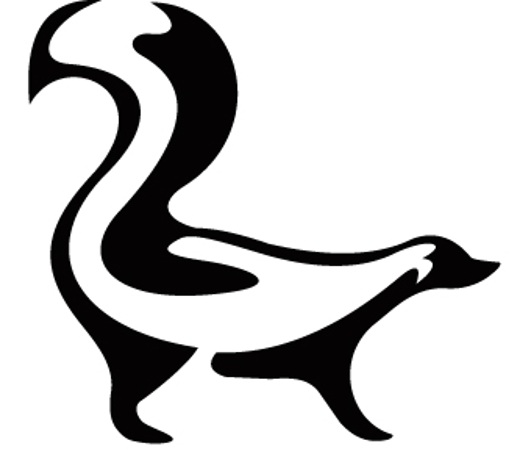FACTS ABOUT SCONC
SCONC members and the public can take part in activities, such as American Scientist’s Science by the Slice series and professional development events that discuss everything from how to make quality videos on your smart phone to how to write a book. SCONC membership also offers benefits like networking opportunities, job postings, discounts on space-limited events, travel awards to attend conferences, and entry to our annual science communication contest and awards gala, the SCONCies. While SCONC continues to evolve, offering functions that benefit participants and the region, it never forgot its origins and reason for being. SCONC is pleased to document its history and some of its contributions to science communications.
A SCONC IS BORN
Like its sister groups, the D.C. Science Writers Association (DCSWA) — pronounced “DucksWA” — and Science Writers in New York (SWINY), SCONC followed the tradition of having an animal mascot. According to SCONC co-founder Chris Brodie, he pushed hard for the name SCONC, although people were not excited about it at first due to its negative connotations.
“I really liked the name because I have an affection for skunks,” said Brodie. “Also, in some ways it was apt to describe science writers, because they have some of the same characteristics. They are affable and mostly innocuous, but liable to create a burning stink when provoked.”
At the time, Brodie was an associate editor at American Scientist and regularly attended professional science writing conferences like the National Association of Science Writers (NASW), Council for the Advancement of Science Writing (CASW), and World Conference of Science Journalists (WCSJ). He got to know professional science writers and institutional communicators, many of whom lived and worked in the Triangle. Brodie kept running into SCONC co-founder Russ Campbell in different cities where these meetings were held, although they worked two miles from each other.
Campbell worked for BWF as a communications officer, and he was able to convince his boss to have BWF provide financial resources and the room for the first SCONC meeting. Sigma Xi, The Scientific Research Honor Society also provided some funding and space for meetings in the early days. “To be called a co-founder is really an honor, but there were a lot of people thinking about this at the time,” said Campbell. “I can’t imagine how I would have met all the people I’ve known over the years without SCONC.”
FELLOWSHIP AND MORAL SUPPORT
By the summer of 2007, SCONC had nearly 200 people on its email list, with the list of members steadily increasing. SCONC held events each month, with members taking turns hosting. The host provided the food and beverages, especially the alcoholic kind, and did the marketing, which was all by email. “Initially, all it was is ‘we all do science writing, and we all live in the Triangle,'” said Duke University’s Karl Bates. “Let’s drink a beer and get to know each other.”
One of the biggest events that showcased a lot of SCONCs was a science bloggers meeting, which eventually became Science Online. Anton Zuiker and Bora Zivkovic established it in late 2007 at UNC, and the next few years it was held at Sigma Xi headquarters, where it would sell out. Before Pulitzer Prize winning writer Ed Yong became famous, he attended these conferences. Rebecca Skloot, author of The Immortal Life of Henrietta Lacks, was also an attendee. “Early on we could have moved it around the country, but we chose to keep it in RTP because we wanted it associated with RTP and SCONC,” said Zuiker. “We wanted to keep making a name for this area as one of the premier centers of science communication in the country.”
At the start of 2008, Ernie Hood became SCONC’s first president and led the organization for many years. “It’s wonderful that the group is still going strong,” said Hood. “It is fulfilling some of the goals we established early on.”
SCONC HOSTS SCIENCEWRITERS 2012
Usually, one university submits a bid to host NASW, but in 2011, SCONC was given a unique opportunity to have the entire Triangle serve as host of ScienceWriters, the joint annual meeting of the CASW and the NASW — the largest North American gathering of science writers. For the next 12 months, Bates and his army of SCONC volunteers threw themselves into the project. They worked with people from UNC, NCSU, Duke, Research Triangle Institute, UNC-Charlotte, EPA, and NIEHS.
SCONC opened the meeting on October 26 at the Convention Center in downtown Raleigh. The event lasted several days and included workshops, scientific talks, and tours, a reception at RTP headquarters, a gala awards party at the North Carolina Museum of Natural Sciences, and a Halloween party in downtown Raleigh. Hurricane Sandy crashed the party, however, drawing away many Northeast attendees who fled home as the storm passed by North Carolina and bashed into New York.
After a year of hard work organizing the ScienceWriters meeting, SCONC members were worn out and entered an inactive phase. Without knowing it, they were behaving like their skunk counterparts that experience a state similar to hibernation called torpor.

Actual photo of SCONCS socializing at ScienceWriters 2012
SMELLS LIKE SCONC SPIRIT
In 2016, freelance science writer Marla Broadfoot, who had been on the SCONC Board since 2012, assumed the presidency. SCONC secured consistent funding from longtime partner Burroughs Wellcome Fund, revamped its programming, and started sharing very important skunk trivia on social media.
Also in 2016, Bates and Jenny Cox wrote and received an NASW Peggy Girshman Idea grant to fund a Climate Change Conference for regional reporters and meteorologists in Asheville, North Carolina. Conference goers visited the U.S. Forest Service’s long-term Smoky Mountains research station. They partied at Asheville’s Climate Collider, which supports early stage climate change entrepreneurs. And they toured the National Weather Service’s data archive, which holds the entire U.S. meteorological record, back to the revolutionary period.
Around that time SCONC launched one of its more popular events, the Science in the Movies (SITM) series, organized by Jory Weintraub. SITM featured commentary from experts including film studies professor Marsha Gordan on how science was portrayed on the silver screen. Discussing the impracticality of re-animating dead tissue in Frankenstein or sustaining life on another planet in The Martian, appealed to audiences of all ages and backgrounds. “I think that SCONC has always tried to be a group for professional development, as well as socialization and networking,” said American Scientist’s Fenella Saunders. “We’ve held workshops for digital production, the Drink and Think series, and always had a strong mentoring presence with ComSciCon Triangle.”
In 2017, SCONC celebrated its 10-year anniversary with a skunk-shaped birthday cake and a bash at the Burroughs Wellcome Fund. The same year, Cox chaired the Communications Committee at the World Conference of Science Journalists in San Francisco, which was co-hosted by NASW and CASW. SCONC members were heavily involved in planning the meeting, and it was a huge success.

A full house for a Science in the Movies event, Fall 2019
SCONCS FOREVER
To help further its mission of fostering a love of science and science communication across North Carolina, SCONC became an Exchange Group with the North Carolina Biotechnology Center (NCBC) in 2019. NCBC provides space for events, funding, and admin support for the growing organization. In 2020, SCONC launched a membership model, which enabled it to provide new benefits to dues-paying members, such as special events, travel awards, and the SCONCies Science Communication Awards (complete with skunk trophies).
But the organization’s reach does not stop at state lines. In collaboration with former SCONC Ben Young Landis of Sacramento, Broadfoot created the SciWriCongress, an organization that brings together all the regional science communicator groups in the U.S. The groups met for the first time in 2018 at the NASW meeting in D.C. Each group had delegates that shared information about their membership models, mentorship ideas, and programming. “It’s about supporting each other, as we do all we can to support science communicators locally and the field of science communication in general,” said Broadfoot. “And seeing skunk-shaped stress balls [an in-demand piece of SCONC paraphernalia] taking over the nation.”
In the Summer of 2022, Bates, Cox, Broadfoot, and NC A&T’s Checo Rorie launched a paid internship program to place HBCU and other underrepresented students into science communication roles around the Triangle, funded by a Peggy Girshman Idea Grant. The program could serve as a template for similar programs across the country and could help diversity the pipeline of future science communicators. Broadfoot stepped down in March 2022 and @thesharkologist Michelle Jewell became the next SCONC president. And the story of SCONC continues. Under Jewell’s leadership, we achieved 501(c)(3) non-profit status.
In addition to the people mentioned above, many other Board members and interns have contributed to SCONC’s success: Katey Ahmann, Bradley Allf, Robin Arnette, Greer Arthur, Stephanie Batalis, Thania Benios, Christine Brown, Marie Claire Chelini, Helen Chickering, Cathy Clabby, Clinton Colmenares, Nate DeGraff, Rob Dunn, Eleanor Hook, Lindsay Key, David Kroll, Patric Lane, Siyun Lee, Holly Menninger, Laetitia Meyrueix, Glenn Murphy, Abby Olena, Tamara Poles, Amanda Rossillo, Matt Shipman, Robin Smith, Brian Southwell, Katie Stember, Jamie Vernon.
“The members of SCONC have told the story of the science taking place at North Carolina institutions, organizations, and companies,” said Zuiker. “We should be proud of that work, because it is happening from the mountains to the coast.”

Or stay connected as a Friend by signing up for our listserv and quarterly newsletter